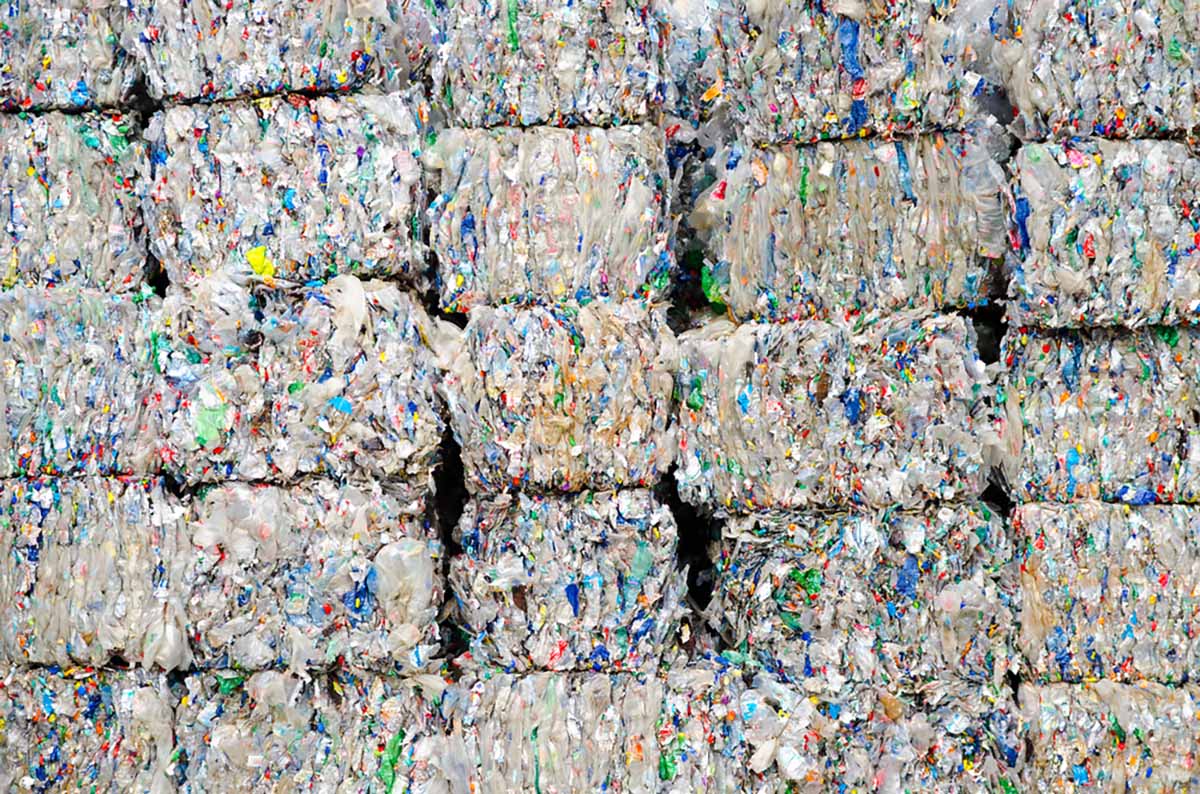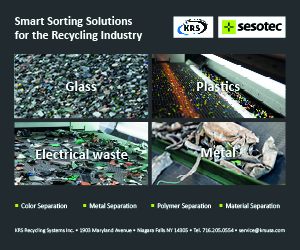
Research from the Association of Plastic Recyclers shows a 28% recycling rate for PET and HDPE bottles in 2020. | Frank Fiedler/Shutterstock
The Association of Plastic Recyclers released a report noting 21% of HDPE, PET and PP plastic packaging is recycled in the U.S.
The report also outlined ways to improve that number, including ensuring all new products and packaging are compatible with recycling, creating harmonization among the types of plastic collected in community recycling programs and improving those programs.
In a press release, the Association of Plastic Recyclers (APR) said its data show that recycling “is a viable, accessible and scalable solution for reducing plastic waste.” APR owns Resource Recycling, Inc.
“APR’s state-of-the-industry report tells the true story of plastic recycling in the United States,” said Steve Alexander, APR president and CEO, in a press release. “This is an industry that processed almost five billion pounds of post-consumer plastic material in 2020 despite a pandemic and related lockdown, and we have every expectation that number will continue to grow.”
The report comes after several different, and lower, plastic recycling numbers have been published by a variety of groups, including the 2018 rate of 9% from the EPA and the 5% rate from a Beyond Plastics and Last Beach Cleanup report.
“Americans overwhelmingly support recycling, but too often, their enthusiasm is met with discouraging – and usually misleading – data points,” the report stated, adding that the other rates “include containers, packaging and durable goods meant to last many years as well as non-durable goods not intended for recycling like garbage bags,” while APR’s report does not.
About 80% of rigid plastic packaging in the U.S. is PET, HDPE and PP, the press release noted. Using EPA data, the group determined 21% of the plastic packaging in those categories is recycled. For PET and HDPE bottles alone, the recycling rate was 28% in 2020.
“With more supply of recyclable plastic material from consumers, U.S. plastic recyclers could boost PET and HDPE bottle recycling rate – raising the rate to over 40% – with minimal additional investment and using existing processing infrastructure in the U.S.,” the press release noted.
The report acknowledged that “recycling numbers can – and should – be much higher, given that what we fail to recover is waste left for future generations to wade through.”
Alexander said in the press release that increasing the recycling rate is important because demand for recycled material is stronger than ever, “spurred by a variety of factors including brand sustainability commitments and legislative activity.”
The current market demand for post-consumer resin (PCR) is outpacing the supply available, the report noted, and the U.S will need to double or triple collection of most resin types to keep up with corporate sustainability commitments.
“While consumers hold a key to the solution, the responsibility cannot fall on consumers alone,” the report stated. “The problem of plastic waste is a problem of public policy. To grow our supply of post-consumer plastic feedstock, the United States needs to develop robust public policies at the state and federal levels to drive better product and packaging design, simplify recycling, strengthen collection and sortation capabilities and sustain high demand for recycled content.”
That should include streamlining labeling to reduce consumer confusion and investing in upgrades to community collection and sortation infrastructure.
“This report shows that, while there is still work to be done, plastic recycling can succeed,” Alexander said. “Consumers want recycling to work, and recyclers are ready to process more material. Our industry is innovative and resilient. It is time to recommit to plastic recycling for our communities, for our environment and for our future.”
A version of this story appeared in Plastics Recycling Update on August 9.
More stories about research
- UMass alumni go small with trash-sorting robot pilot
- Closed Loop suggests small-format recycling improvements
- Surveys examine gaps in consumer recycling education



